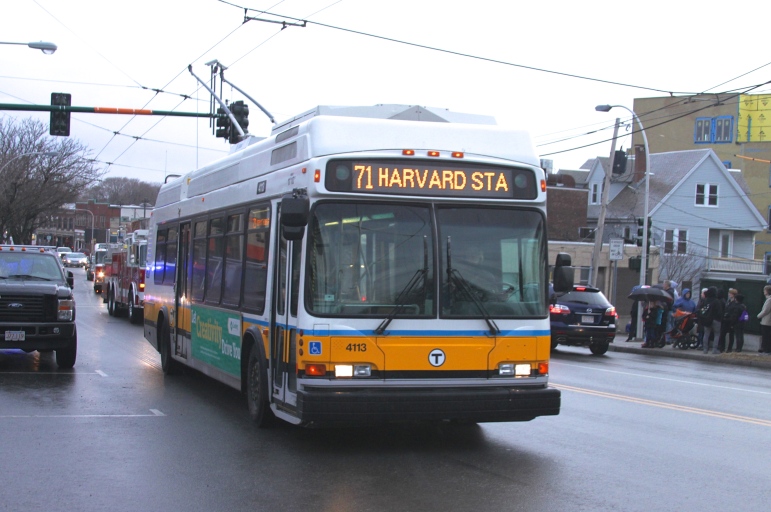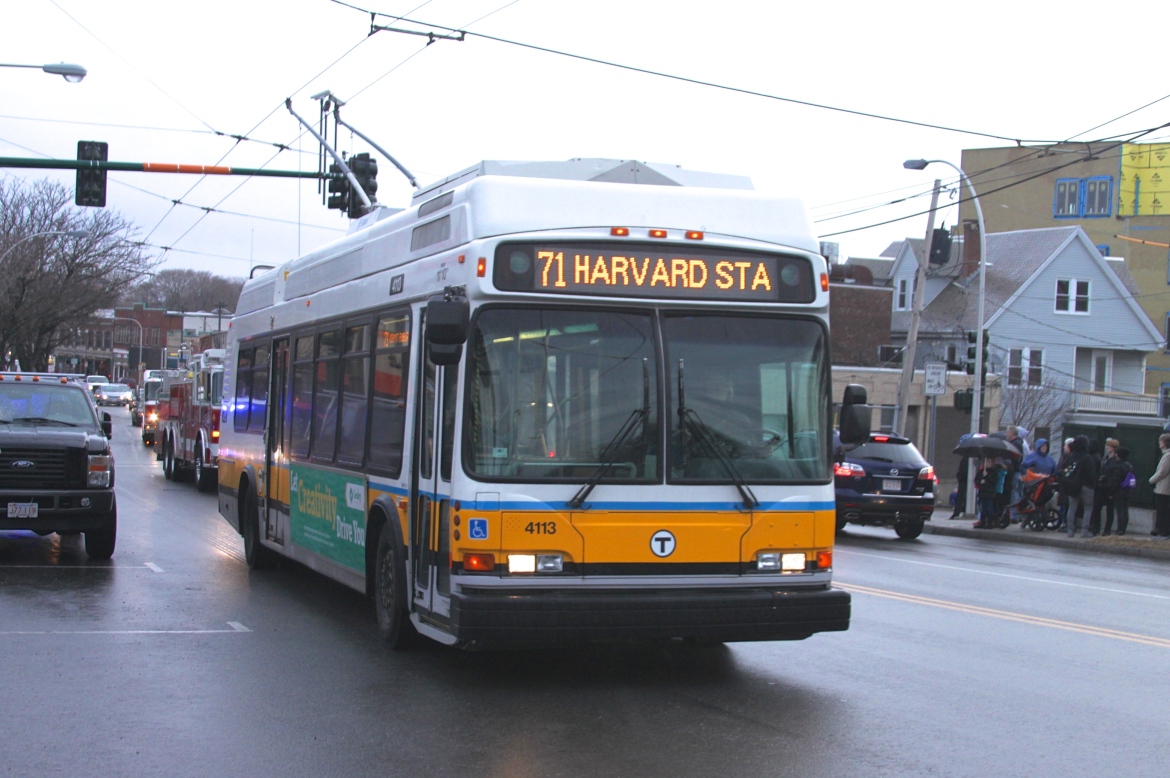
Charlie Breitrose
An MBTA bus in Watertown.
With crowded buses in Watertown and new developments the MBTA is looking for ways to improve public transportation.
Mass. Department of Transportation and MBTA officials discussed possible ways to improve public transportation in town at a meeting held in December a the Arsenal Center for the Arts.
Around a dozen bus routes serve Watertown, but the most heavily used ones are the 57 from Watertown to Kenmore Square (more than 12,000 riders a day), the 70/70A along Main and Arsenal streets (7,357 a day), the 73 down Belmont Street to Harvard Square (6,424), and the 71 down Mt. Auburn Street to Harvard Square (5,548).
The T’s Key Bus Routes Programs has plans to improve the 71 and 73 buses, but the 70/70A is not part of that program. More changes that could help those routes may come from a MassDOT study looking for ways to improve traffic flow in the area of the Mt. Auburn Street/Fresh Pond Parkway intersection.
MBTA officials said some improvements have already been made to the 70/70A. They have added more buses and six more trips on weekends.
One of the reasons for late buses and bunching of vehicles is due to the route, which goes from Central Square in Cambridge to Cedarwood on the westside of Waltham, and in the case of the 70A, to North Waltham.
A way to improve the on-time rates for buses could be spliting off the North Waltham route. It this option is considered, Waltham bus riders would be surveyed be done to see how they use the bus.
The MBTA will also look for ways to speed up buses along the existing route. Strategies that have been used in the past include:
- Moving buses from less busy times to times of heavy ridership
- Removing bus stops that are close together
- Moving bus stops to the far side of signaled intersections so buses do not get stuck at lights after pulling over to let passengers on and off
- Allowing drivers of buses running behind schedule to request longer green lights to help them catch up (This is in use at four places along the 57 route)
- Adding “queue jumping” lanes, where buses can use a right turn lane to go straight in order to get past a line of cars, and
- Adding fare collection machines so people can pay prior to boarding the bus
A consultant will be hired during the first couple months of 2015, and studies looking at short- and long-term improvements will be conducted throughout the year. Public meetings will also be held.
